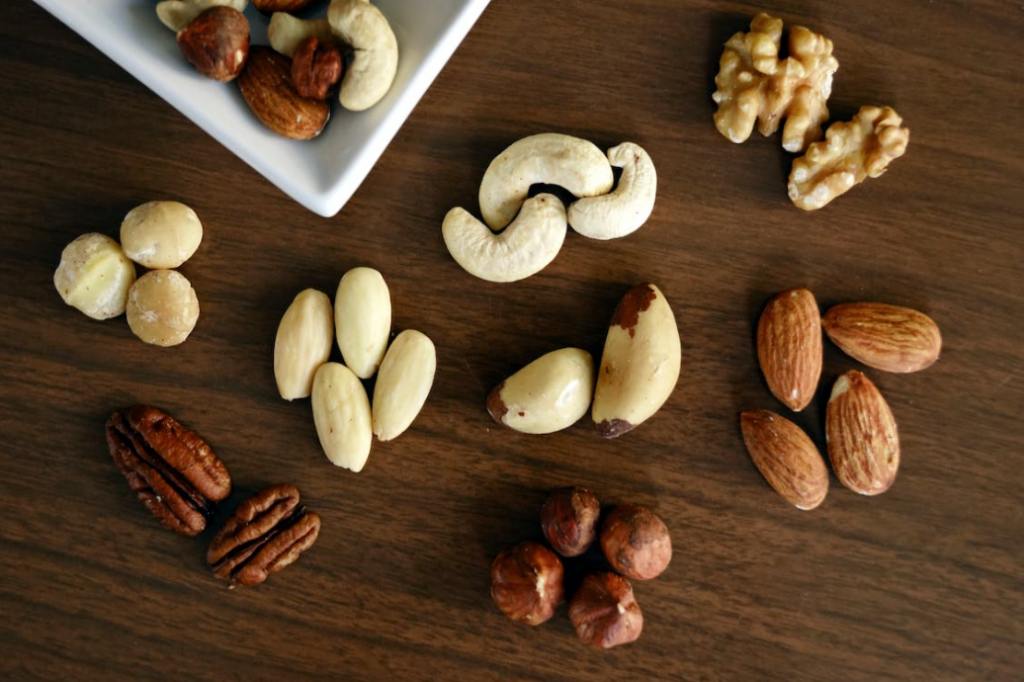Period pains are no fun and recently, I’ve been having the worst cramps of my life. I’m left laying in bed all day in pain unable to move without sending sharp pains through my abdomen.

It seems like all I can do to ease this pain is take over the counter pain medication.
But personally, I don’t want to have to rely on ibuprofen to relive my pain every month.
If I were to continue with that, what would my liver and other organs at risk from ibuprofen look like in 30 years? Probably not very good.
This is not the path that I want to go down. Because of this, I’ve been doing a lot of research and learning about how to heal period pains through food; from the inside out.
It seems that whenever we look for something to help our periods, there are only short term solutions to decrease our symptoms, but none to actually heal the rooted problem.
Birth control, heating pads, pain medication, hot showers, could all ease symptoms. However, they all either use unnecessary medications that’ll cause more harm than good down the road or are just temporary solutions.
Don’t get me wrong I am still going to use all these when I really need them, I just don’t want to get used to relying on medications that aren’t meant for long term use.
As a result, I’ve been looking for solutions to heal my body internally.
Here are some of the things I’ve discovered you should and shouldn’t do to reduce period pains:
1. Load up on healthy fats
Period pains are usually caused from hormone imbalances within your body. Because hormones are made up of fats, by eating lots of healthy fats leading up to your period, you can help balance your hormones.

Some examples of healthy fats include:
Avocados
Nuts specifically walnuts (Because they are high in Omega-3 fatty acids)
Salmon
Flax seeds
Coconut oil
And Ghee
All of these are good options to look to incorporate into your diet during your cycle.
2. Avoid inflammatory foods
We may think it’s considered “normal” to have painful cramps, because it’s so common for so many women, but it is in no way naturally.
While mild discomfort is natural, no one should be laying in bed all day unable to work, go to school, or do any other usual daily activities because of how bad their cramps are. This is not natural.
Most of the time cramps are your body telling you that something isn’t right. Although this may be indicating bigger problems like endometriosis, ovarian cysts, or fibroids (none of these should go ignored), if it isn’t, then the cause could be sensitivity to foods.
If there is no other underlying issue, then many people say that bad cramps come from a sensitivity to certain foods.
Cramps can be caused specifically from a sensitivity to inflammatory foods. Inflammatory foods that can worsen cramping are sugar, dairy, processed and red meat, oil, and salt.
Inflammatory foods increase cramping because they cause the release of prostaglandins, which are responsible for making the muscles and blood vessels of the uterus contract, causing cramping.
I would say the biggest inflammatory culprit here is sugar.
This is because sugar is one of the most inflammatory foods that disrupts and upsets your body, and it is hidden in so many everyday foods we eat.
As good as sugar sounds, especially on your period and with cravings, it’s going to be so bad for your body.
If you eat lots of sugar during and leading up to your period, your body and muscles will be so much more inflamed and the pain will be so much worse.
I recommend minimizing all inflammatory food intake, especially your sugar intake as hard as it may be, during your period.
3. Eat foods high in magnesium

Magnesium is an essential to making periods less painful because it reduces the number of prostaglandins that cause pain, while also relaxing the muscles of the uterus.
This is definitely something we want during our periods.
Some foods high in magnesium are:
Bananas
Dark leafy greens
Spinach
Legumes
Almonds, cashews, and other nuts
Dark chocolate
Whole grains
All of these food are high in magnesium and good to consume during or leading up to your period.
Many people also take a magnesium supplement if you think that would be a better option for you.
4. Avoid coffee and caffeine in general
Caffeine can constrict blood vessels leading to a decrease in circulation. This causes your muscles to be more tense and your cramps to be much worse.
Additionally, coffee in itself increases inflammation, can cause bloating, and usually has a lot of added sugar and dairy that can increase inflammation.
If you’re someone who really can’t let go of coffee around the time of your period, you can try decaf coffee or substituting it with teas like a raspberry, ginger, or chamomile tea.
5. Load up on broccoli and cauliflower
Broccoli and cauliflower both bind to prostaglandins and reduce the number in the uterus.
Taking the prostaglandins out of the body helps to ease the period pains, because they are responsible for contractions and cramping.
6. Stay hydrated
The final thing to help with period pains is to stay hydrated. When your body is dehydrated, your cramps can become worse.
If you’re looking for ways to drink more water, I previously wrote about what I do to drink more water and stay hydrated in a previous post.
Water will help decrease bloating and increase blood flow to your uterus. This will help ease pain and keep it at bay.

I like to add lemon juice to my water because it adds electrolytes. Sometimes, plain water can go right through your body and leave you running to the bathroom without hydrating you.
We certainly don’t want this to happen but by adding electrolytes from the lemon juice, this can help slow the process down and your body absorb more.
You can also try drinking warm water because the warmth can ease the cramping and can increase blood flow even more.
I hope some of these help you relive your period pains because really none of us deserve to be in this much pain. Especially if it’s not natural.
Don’t substitute this information for medical advice either, if your periods are concerning, definitely talk to your doctor.
These are just additional steps you can try if you’re looking for a more natural route to ease your pains.